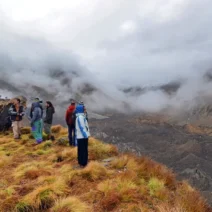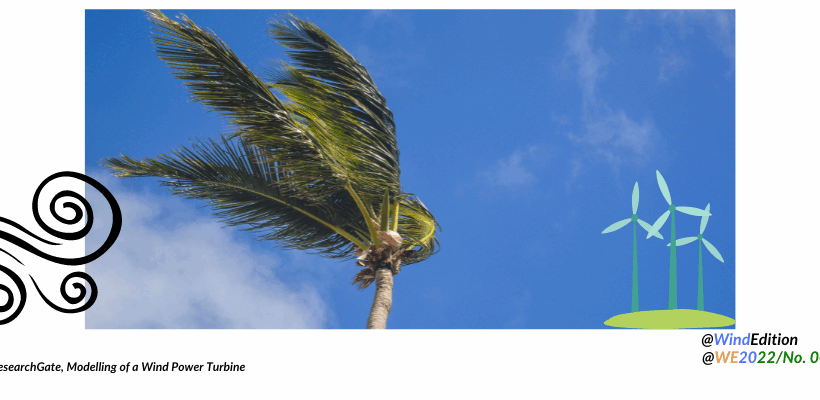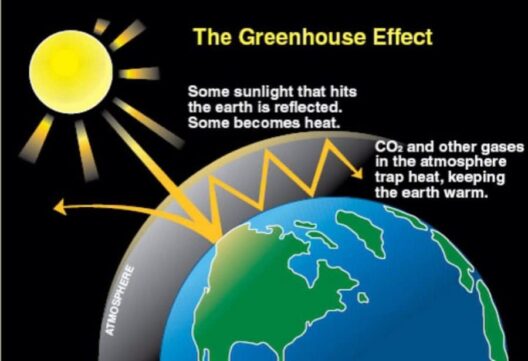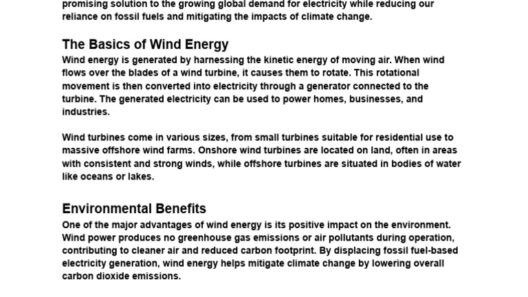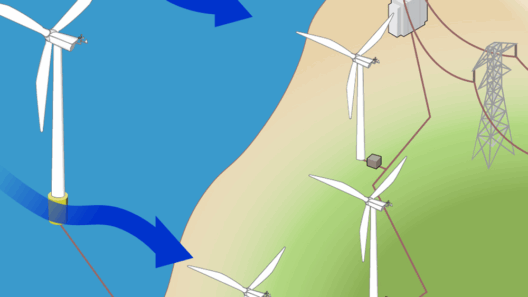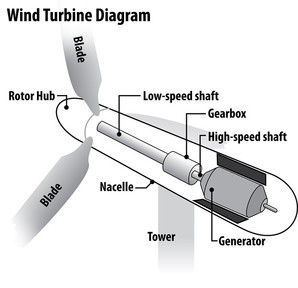When gazing at the gracefully spinning blades of a wind turbine against a backdrop of deep blue sky, one might wonder: what is it that propels these magnificent structures? What is wind energy and where does this ethereal force of nature originate? This exploration delves into the very essence of wind energy, illuminating its origins and its role as a sustainable solution in our modern ecosystem.
Wind energy is a form of renewable energy harnessed from the kinetic energy of moving air masses. This starkly contrasts with non-renewable energy sources, which contribute to ecological degradation and climate change. As wind currents traverse the Earth’s surface, they carry enormous amounts of energy, which can be captured and transformed into electrical power through sophisticated technologies. In this context, understanding what causes wind to occur is imperative, as it lays the groundwork for appreciating the immense potential of wind power in battling our energy quandaries.
The genesis of wind can be traced back to several interrelated atmospheric phenomena. At its core, wind is the result of differential heating of the Earth’s surface by the sun. This process, intricate yet elegant, establishes a fascinating dance of air masses, creating regions of high and low pressure.
The Dance of Celestial Bodies: The Sun’s Influence
The sun, a radiant ball of energy, is the primary driver of wind. As sunlight hits the Earth, different surfaces absorb varying amounts of heat. For instance, land heats up more quickly than water, resulting in temperature variations across different geographic regions. These discrepancies in temperature create a scenario where hot air, less dense, rises and cold air, denser and heavier, flows in to take its place. This movement of air generates wind.
This intricate exchange isn’t just a one-time occurrence. It’s a continuous loop. As warm air rises, it creates a void. Cooler air rushes in to fill that void. The result is a perpetual cycle of air movement, setting the stage for wind energy production. When we consider the scale of this phenomenon, we recognize that the sway of leaves on trees and the spin of wind turbines are merely modest manifestations of a grand environmental orchestra led by the sun.
The Influence of Local Geography: Mountains, Valleys, and Open Plains
While the sun ignites the winds, local geography intricately shapes their character. Mountains and valleys play a pivotal role in influencing wind patterns. As air encounters elevated terrain, it is forced to ascend, often cooling and expanding as it does so. This movement can create regional wind patterns, such as the legendary Chinook winds in North America, characterized by warm, dry conditions on the leeward side of mountains.
Conversely, in flat terrains, the wind can flow freely, gaining speed and unimpeded force. This concept is critical for wind energy production. Wind farms are strategically placed in these optimal locations where winds are fierce and consistent. Understanding these localized geographical influences is essential for harnessing wind energy effectively and efficiently.
Weather Patterns and Climate Variability: The Broader Context
Beyond local topographies, broader weather patterns and seasonal changes further influence wind flows. The Coriolis effect, caused by the Earth’s rotation, reveals how moving air is turned to the right in the Northern Hemisphere and to the left in the Southern Hemisphere. This turning results in the development of trade winds, westerlies, and polar easterlies, all of which play critical roles in global weather systems.
The beauty of wind energy lies not just in the mechanics of air movement, but also in its ability to adapt to changing climates. Seasonal variations dictate wind strengths, which in turn dictate energy output. For example, coastal regions often experience robust winds due to thermal differences between land and sea during summer months. Understanding these patterns allows for more effective planning and deployment of wind energy technologies.
Wind Energy: A Sustainable Solution for a Greener Future
The allure of wind energy extends beyond its scientific underpinnings. Wind power emerges as a beacon of hope in an era fraught with environmental challenges. As the planet grapples with rising temperatures and ecosystem imbalances, the shift to renewable energy sources like wind is critical. Unlike fossil fuels, which emit greenhouse gases, wind energy is clean and sustainable, leaving only a minimal environmental footprint.
Furthermore, advances in technology have rendered wind energy increasingly efficient. Modern turbines with taller structures and larger blades can capture more energy from the wind, maximizing output while minimizing impact on surrounding environments. The aesthetic appeal of wind farms lined against picturesque landscapes serves as a testament to humanity’s ingenuity, merging technology with nature in a harmonious embrace.
In conclusion, wind energy is a captivating amalgamation of solar influence, geographical dynamics, and climatic variability. It represents a significant leap toward sustainable living, showcasing the indomitable force of nature in the twenty-first century. In an era where climate change demands urgent action, investing in wind energy not only fortifies our energy infrastructure but also cherishes the very essence of our planet’s natural beauty. By acknowledging and harnessing the power of the wind, we embrace a cleaner, greener future for generations to come.

